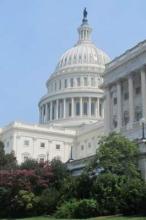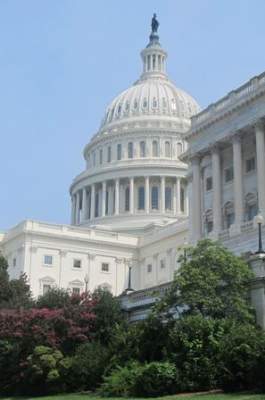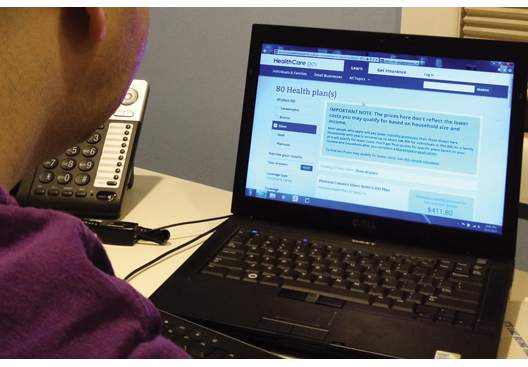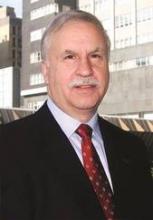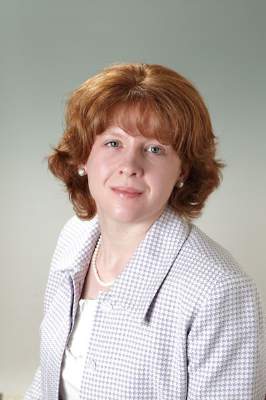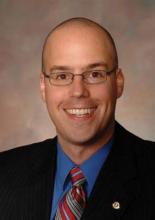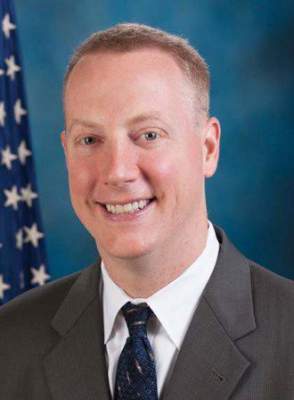User login
House curbs Medicare premium increase under budget deal
Lawmakers are seeking to limit an increase in Medicare Part B premiums as part of the budget deal negotiated between outgoing House Speaker John Boehner (R-Ohio) and the White House, and approved by the House on Oct. 28.
The House approved the Bipartisan Budget Act by a vote of 266-167. The Senate is expected to act on the deal shortly.
The deal means that some Medicare beneficiaries will avoid seeing their Part B premiums jump from about $105 to $160 per month. Instead, those beneficiaries who are not “held harmless” under Medicare rules – about 30% of Medicare beneficiaries – would see their premiums rise to $120 in 2016. The bulk of Medicare beneficiaries will have stable premiums at about $105 next year.
To pay for the rollback of part of the increase, the budget agreement also calls for those beneficiaries not held harmless under the law to pay an extra $3 per month starting in 2016.
But an analysis of this provision by the National Center for Policy Analysis noted that such adjustments could happen again, as they are tied to the a cost of living adjustment. This is “just another case of Congress kicking the can down the road,” NCPA officials wrote in an Oct. 28 blog post.
The budget deal included only a few other health care–related provisions. The bill would broaden the application of inflation-triggered rebates – the rebates paid by manufacturers when drug price increases outpace inflation – to generic drugs as well as brand name drugs.
Another provision codifies the definition of provider-based off-campus hospital outpatient departments that are not on the main campus and are more than 250 yards away from the main hospital campus. Providers at these off-campus locations would be reimbursed under the ambulatory surgical center prospective payment system or the Medicare physician fee schedule rather than the hospital outpatient prospective payment system.
Finally, the budget bill eliminates a requirement from the Affordable Care Act that mandates that employers with more than 200 workers automatically enroll new full-time employees into a qualifying health plan if it is offered, and automatically reenroll existing employees.
Lawmakers are seeking to limit an increase in Medicare Part B premiums as part of the budget deal negotiated between outgoing House Speaker John Boehner (R-Ohio) and the White House, and approved by the House on Oct. 28.
The House approved the Bipartisan Budget Act by a vote of 266-167. The Senate is expected to act on the deal shortly.
The deal means that some Medicare beneficiaries will avoid seeing their Part B premiums jump from about $105 to $160 per month. Instead, those beneficiaries who are not “held harmless” under Medicare rules – about 30% of Medicare beneficiaries – would see their premiums rise to $120 in 2016. The bulk of Medicare beneficiaries will have stable premiums at about $105 next year.
To pay for the rollback of part of the increase, the budget agreement also calls for those beneficiaries not held harmless under the law to pay an extra $3 per month starting in 2016.
But an analysis of this provision by the National Center for Policy Analysis noted that such adjustments could happen again, as they are tied to the a cost of living adjustment. This is “just another case of Congress kicking the can down the road,” NCPA officials wrote in an Oct. 28 blog post.
The budget deal included only a few other health care–related provisions. The bill would broaden the application of inflation-triggered rebates – the rebates paid by manufacturers when drug price increases outpace inflation – to generic drugs as well as brand name drugs.
Another provision codifies the definition of provider-based off-campus hospital outpatient departments that are not on the main campus and are more than 250 yards away from the main hospital campus. Providers at these off-campus locations would be reimbursed under the ambulatory surgical center prospective payment system or the Medicare physician fee schedule rather than the hospital outpatient prospective payment system.
Finally, the budget bill eliminates a requirement from the Affordable Care Act that mandates that employers with more than 200 workers automatically enroll new full-time employees into a qualifying health plan if it is offered, and automatically reenroll existing employees.
Lawmakers are seeking to limit an increase in Medicare Part B premiums as part of the budget deal negotiated between outgoing House Speaker John Boehner (R-Ohio) and the White House, and approved by the House on Oct. 28.
The House approved the Bipartisan Budget Act by a vote of 266-167. The Senate is expected to act on the deal shortly.
The deal means that some Medicare beneficiaries will avoid seeing their Part B premiums jump from about $105 to $160 per month. Instead, those beneficiaries who are not “held harmless” under Medicare rules – about 30% of Medicare beneficiaries – would see their premiums rise to $120 in 2016. The bulk of Medicare beneficiaries will have stable premiums at about $105 next year.
To pay for the rollback of part of the increase, the budget agreement also calls for those beneficiaries not held harmless under the law to pay an extra $3 per month starting in 2016.
But an analysis of this provision by the National Center for Policy Analysis noted that such adjustments could happen again, as they are tied to the a cost of living adjustment. This is “just another case of Congress kicking the can down the road,” NCPA officials wrote in an Oct. 28 blog post.
The budget deal included only a few other health care–related provisions. The bill would broaden the application of inflation-triggered rebates – the rebates paid by manufacturers when drug price increases outpace inflation – to generic drugs as well as brand name drugs.
Another provision codifies the definition of provider-based off-campus hospital outpatient departments that are not on the main campus and are more than 250 yards away from the main hospital campus. Providers at these off-campus locations would be reimbursed under the ambulatory surgical center prospective payment system or the Medicare physician fee schedule rather than the hospital outpatient prospective payment system.
Finally, the budget bill eliminates a requirement from the Affordable Care Act that mandates that employers with more than 200 workers automatically enroll new full-time employees into a qualifying health plan if it is offered, and automatically reenroll existing employees.
Healthcare.gov: Premiums to jump in 8 states
Patients in eight states could be in for a big surprise when they reenroll for health insurance coverage through the federal marketplace.
The Health & Human Services department announced Oct. 26 that residents in Oklahoma, Montana, Alaska, New Mexico, South Dakota, North Carolina, Oregon, and Tennessee will see at least a 20% rise in premiums for benchmark plans. Leading the way is Oklahoma with a 35.7% increase, followed by Montana (34.5%) and Alaska (31.5%).
Open enrollment for 2016 begins on Nov. 1.
Four states will see a decline in benchmark premium rates, the largest occurring in Indiana (–12.6%), followed by Mississippi (–8.2%), Maine (–1.2%), and Ohio (–0.7%).
Across the 37 states in the federal marketplace, premiums for benchmark plan will increase on average 7.5%. In 2015, there were 8.8 million people enrolled in benchmark plans.
HHS also reported that next year, nearly 8 in 10 returning patients will be able to buy a plan with premiums less than $100 after tax credits, while 7 in 10 will be able to spend $75 or less after tax credits.
Patients in more than two-thirds of counties covered by the federal marketplace will be able to choose from three or more plans. HHS also noted that in the second open enrollment period (2015), those who switched plans within the same tier saved an average of nearly $400 on their annualized premiums after tax credits, compared with those who did not switch.
Patients in eight states could be in for a big surprise when they reenroll for health insurance coverage through the federal marketplace.
The Health & Human Services department announced Oct. 26 that residents in Oklahoma, Montana, Alaska, New Mexico, South Dakota, North Carolina, Oregon, and Tennessee will see at least a 20% rise in premiums for benchmark plans. Leading the way is Oklahoma with a 35.7% increase, followed by Montana (34.5%) and Alaska (31.5%).
Open enrollment for 2016 begins on Nov. 1.
Four states will see a decline in benchmark premium rates, the largest occurring in Indiana (–12.6%), followed by Mississippi (–8.2%), Maine (–1.2%), and Ohio (–0.7%).
Across the 37 states in the federal marketplace, premiums for benchmark plan will increase on average 7.5%. In 2015, there were 8.8 million people enrolled in benchmark plans.
HHS also reported that next year, nearly 8 in 10 returning patients will be able to buy a plan with premiums less than $100 after tax credits, while 7 in 10 will be able to spend $75 or less after tax credits.
Patients in more than two-thirds of counties covered by the federal marketplace will be able to choose from three or more plans. HHS also noted that in the second open enrollment period (2015), those who switched plans within the same tier saved an average of nearly $400 on their annualized premiums after tax credits, compared with those who did not switch.
Patients in eight states could be in for a big surprise when they reenroll for health insurance coverage through the federal marketplace.
The Health & Human Services department announced Oct. 26 that residents in Oklahoma, Montana, Alaska, New Mexico, South Dakota, North Carolina, Oregon, and Tennessee will see at least a 20% rise in premiums for benchmark plans. Leading the way is Oklahoma with a 35.7% increase, followed by Montana (34.5%) and Alaska (31.5%).
Open enrollment for 2016 begins on Nov. 1.
Four states will see a decline in benchmark premium rates, the largest occurring in Indiana (–12.6%), followed by Mississippi (–8.2%), Maine (–1.2%), and Ohio (–0.7%).
Across the 37 states in the federal marketplace, premiums for benchmark plan will increase on average 7.5%. In 2015, there were 8.8 million people enrolled in benchmark plans.
HHS also reported that next year, nearly 8 in 10 returning patients will be able to buy a plan with premiums less than $100 after tax credits, while 7 in 10 will be able to spend $75 or less after tax credits.
Patients in more than two-thirds of counties covered by the federal marketplace will be able to choose from three or more plans. HHS also noted that in the second open enrollment period (2015), those who switched plans within the same tier saved an average of nearly $400 on their annualized premiums after tax credits, compared with those who did not switch.
ACA insurance networks lack specialist coverage
Nearly 15% of insurance plans for sale via healthcare.gov lack in-network physicians for at least one specialty, according to an analysis published Oct. 27 in JAMA. Endocrinologists, rheumatologists, and psychiatrists were most commonly excluded.
Stephen C. Dorner of Harvard T. H. Chan School of Public Health, Boston, and his colleagues examined physician networks in 34 states offering plans through the federal marketplace (healthcare.gov) during 2015 open enrollment. They searched plans’ online directories for in-network specialists in obstetrics/gynecology, dermatology, cardiology, psychiatry, oncology, neurology, endocrinology, rheumatology, and pulmonology. Searches were done for specialists within both 50 and 100 miles.
Of the 135 plans, 18 (13%) were specialist deficient in the 100-mile search, while 19 (14%) of plans lacked in-network specialists in the 50-mile search (JAMA. 2015;16:1749-50. doi. 101001/jama.2015.9375).
Patients in specialist-deficient plans had high out-of-network costs, Mr. Dorner and colleagues found. Of the 19 specialist-deficient plans, 5 did not cover out-of-network services, whereas 11 of the remaining 14 plans required cost-sharing of 50% or more. Nine of the 19 inadequate plans did not cover medications prescribed by out-of-network physicians.
The findings raise concerns about patient access to specialty care and suggest that a number of plans are violating network adequacy requirements, Mr. Dorner said, adding that such inadequate plans precipitate high out-of-pocket costs and may lead to adverse plan selection.
On Twitter @legal_med
Nearly 15% of insurance plans for sale via healthcare.gov lack in-network physicians for at least one specialty, according to an analysis published Oct. 27 in JAMA. Endocrinologists, rheumatologists, and psychiatrists were most commonly excluded.
Stephen C. Dorner of Harvard T. H. Chan School of Public Health, Boston, and his colleagues examined physician networks in 34 states offering plans through the federal marketplace (healthcare.gov) during 2015 open enrollment. They searched plans’ online directories for in-network specialists in obstetrics/gynecology, dermatology, cardiology, psychiatry, oncology, neurology, endocrinology, rheumatology, and pulmonology. Searches were done for specialists within both 50 and 100 miles.
Of the 135 plans, 18 (13%) were specialist deficient in the 100-mile search, while 19 (14%) of plans lacked in-network specialists in the 50-mile search (JAMA. 2015;16:1749-50. doi. 101001/jama.2015.9375).
Patients in specialist-deficient plans had high out-of-network costs, Mr. Dorner and colleagues found. Of the 19 specialist-deficient plans, 5 did not cover out-of-network services, whereas 11 of the remaining 14 plans required cost-sharing of 50% or more. Nine of the 19 inadequate plans did not cover medications prescribed by out-of-network physicians.
The findings raise concerns about patient access to specialty care and suggest that a number of plans are violating network adequacy requirements, Mr. Dorner said, adding that such inadequate plans precipitate high out-of-pocket costs and may lead to adverse plan selection.
On Twitter @legal_med
Nearly 15% of insurance plans for sale via healthcare.gov lack in-network physicians for at least one specialty, according to an analysis published Oct. 27 in JAMA. Endocrinologists, rheumatologists, and psychiatrists were most commonly excluded.
Stephen C. Dorner of Harvard T. H. Chan School of Public Health, Boston, and his colleagues examined physician networks in 34 states offering plans through the federal marketplace (healthcare.gov) during 2015 open enrollment. They searched plans’ online directories for in-network specialists in obstetrics/gynecology, dermatology, cardiology, psychiatry, oncology, neurology, endocrinology, rheumatology, and pulmonology. Searches were done for specialists within both 50 and 100 miles.
Of the 135 plans, 18 (13%) were specialist deficient in the 100-mile search, while 19 (14%) of plans lacked in-network specialists in the 50-mile search (JAMA. 2015;16:1749-50. doi. 101001/jama.2015.9375).
Patients in specialist-deficient plans had high out-of-network costs, Mr. Dorner and colleagues found. Of the 19 specialist-deficient plans, 5 did not cover out-of-network services, whereas 11 of the remaining 14 plans required cost-sharing of 50% or more. Nine of the 19 inadequate plans did not cover medications prescribed by out-of-network physicians.
The findings raise concerns about patient access to specialty care and suggest that a number of plans are violating network adequacy requirements, Mr. Dorner said, adding that such inadequate plans precipitate high out-of-pocket costs and may lead to adverse plan selection.
On Twitter @legal_med
FROM JAMA
Key clinical point: Many patients who buy insurance via healthcare.gov are not getting access to specialists’ care.
Major finding: In a study of 135 federal marketplace insurance plans, nearly 15% lacked in-network physicians for at least one specialty. Of 34 states, 9 had at least one specialist-deficient plan.
Data source: Review of physician networks listed on insurance plans for sale via healthcare.gov in April 2015.
Disclosures: No relevant financial disclosures were reported.
Malpractice premiums flat in 2015, but changes could be ahead
Physicians paid about the same in liability insurance premiums in 2015 as in 2014, and analysts don’t see costs changing anytime soon. A nationwide survey of insurers by the Medical Liability Monitor shows that 71% of insurance premiums did not change this year, while 17% of rates rose and 12% fell.
Internists experienced an average premium increase of 0.6% in 2015, while general surgeons saw a 0.2% average rate decrease, and ob.gyns experienced an average 0.5% rate increase.
The static premium market is being largely driven by the low number of lawsuits filed by patients and family members in recent years, said survey coauthor Paul Greve Jr., executive vice president/senior consultant for the Willis Health Care Practice, a global risk management consultant firm.
“It’s amazing to see the continuing stability in claim frequency,” Mr. Greve said in an interview. “The claims counts are just not rising. Its great for the industry, and it’s great for physicians, but it is puzzling because you wonder what has caused what amounts to a sea change in the attitudes of the general public toward malpractice litigation such that the claim counts were drop off.”
Premiums continue to vary geographically. Southern Florida internists for example, will pay $47,707 for malpractice insurance this year, while their counterparts in Minnesota will pay $3,375. For ob.gyns., premiums range from $214,999 in southern New York to $16,240 in central California. General surgeons in Southern Florida will pay $190,829 this year, while Wisconsin surgeons will pay $10,868.
Various factors influence premium amounts, including the overall legal climate and the rate of insurer competition in each state, said Susan J. Forray, principal and consulting actuary with the Milwaukee office of Milliman, a global provider of actuarial services.
“The dollar amounts themselves are a function of the litigation environment [and] the cost level of medicine or living within the state,” Ms. Forray said in an interview. “In terms of rate changes, we are seeing certain environments where there is more competition. Obviously, those more competitive markets are more likely to have rate decreases or perhaps, stable rates, where perhaps markets with less competition are more likely to see increased rates.”
On a regional basis, Southern physicians experienced the largest rate increases, while doctors in the Northeast, West, and Midwest continued to see decreases. The Midwest’s 0.8% rate decrease was the largest decline, while Western states experienced a 0.2% average rate decrease. On average, the South showed a rate increase of 0.9% and the Northeast experienced a 0.1% average decrease. Doctors in Georgia, North Carolina, and Texas saw rate increases in excess of 5%, while Iowa physicians experienced an 11% rate decrease. Only three western states experienced rate increases: New Mexico at 2.5%, Oregon at 2%, and Idaho at 1%. Premium changes for Northeastern doctors fluctuated from Rhode Island’s 7% increase to Pennsylvania’s 8% decrease. Additionally, for the first time in 8 years, the premium market experienced an average overall increase of 0.3% in 2015, compared with an average overall decrease of 1.5% last year.
The jury is still out on how the Affordable Care Act and other health reforms will impact the malpractice premium market, according to Mr. Greve. He said that he believes the majority of upcoming health reforms will improve patient safety, thus reducing liability for doctors. However, as more physicians become part of larger networks to deliver new models of care, their contractual liability spreads, he said. However, as value-based care becomes the law of the land, new claims could arise.
“We’re just beginning to see the tip of the iceberg here,” Mr. Greve said. “In the past, it was overutilization, [the claim] that you did something in order to put money in your pocket. With putting providers at financial risk with capitated or bundled payments or global payments, then the argument is going to be, ‘You didn’t deliver enough care,’ or ‘You [used that device] because it was less expensive.’ ”
The MLM survey, published yearly in October, gathered July 1 premium data from the major malpractice insurers and examines rates for mature, claims-made policies with $1 million/$3 million limits for internists, general surgeons, and ob.gyns.
On Twitter @legal_med
Physicians paid about the same in liability insurance premiums in 2015 as in 2014, and analysts don’t see costs changing anytime soon. A nationwide survey of insurers by the Medical Liability Monitor shows that 71% of insurance premiums did not change this year, while 17% of rates rose and 12% fell.
Internists experienced an average premium increase of 0.6% in 2015, while general surgeons saw a 0.2% average rate decrease, and ob.gyns experienced an average 0.5% rate increase.
The static premium market is being largely driven by the low number of lawsuits filed by patients and family members in recent years, said survey coauthor Paul Greve Jr., executive vice president/senior consultant for the Willis Health Care Practice, a global risk management consultant firm.
“It’s amazing to see the continuing stability in claim frequency,” Mr. Greve said in an interview. “The claims counts are just not rising. Its great for the industry, and it’s great for physicians, but it is puzzling because you wonder what has caused what amounts to a sea change in the attitudes of the general public toward malpractice litigation such that the claim counts were drop off.”
Premiums continue to vary geographically. Southern Florida internists for example, will pay $47,707 for malpractice insurance this year, while their counterparts in Minnesota will pay $3,375. For ob.gyns., premiums range from $214,999 in southern New York to $16,240 in central California. General surgeons in Southern Florida will pay $190,829 this year, while Wisconsin surgeons will pay $10,868.
Various factors influence premium amounts, including the overall legal climate and the rate of insurer competition in each state, said Susan J. Forray, principal and consulting actuary with the Milwaukee office of Milliman, a global provider of actuarial services.
“The dollar amounts themselves are a function of the litigation environment [and] the cost level of medicine or living within the state,” Ms. Forray said in an interview. “In terms of rate changes, we are seeing certain environments where there is more competition. Obviously, those more competitive markets are more likely to have rate decreases or perhaps, stable rates, where perhaps markets with less competition are more likely to see increased rates.”
On a regional basis, Southern physicians experienced the largest rate increases, while doctors in the Northeast, West, and Midwest continued to see decreases. The Midwest’s 0.8% rate decrease was the largest decline, while Western states experienced a 0.2% average rate decrease. On average, the South showed a rate increase of 0.9% and the Northeast experienced a 0.1% average decrease. Doctors in Georgia, North Carolina, and Texas saw rate increases in excess of 5%, while Iowa physicians experienced an 11% rate decrease. Only three western states experienced rate increases: New Mexico at 2.5%, Oregon at 2%, and Idaho at 1%. Premium changes for Northeastern doctors fluctuated from Rhode Island’s 7% increase to Pennsylvania’s 8% decrease. Additionally, for the first time in 8 years, the premium market experienced an average overall increase of 0.3% in 2015, compared with an average overall decrease of 1.5% last year.
The jury is still out on how the Affordable Care Act and other health reforms will impact the malpractice premium market, according to Mr. Greve. He said that he believes the majority of upcoming health reforms will improve patient safety, thus reducing liability for doctors. However, as more physicians become part of larger networks to deliver new models of care, their contractual liability spreads, he said. However, as value-based care becomes the law of the land, new claims could arise.
“We’re just beginning to see the tip of the iceberg here,” Mr. Greve said. “In the past, it was overutilization, [the claim] that you did something in order to put money in your pocket. With putting providers at financial risk with capitated or bundled payments or global payments, then the argument is going to be, ‘You didn’t deliver enough care,’ or ‘You [used that device] because it was less expensive.’ ”
The MLM survey, published yearly in October, gathered July 1 premium data from the major malpractice insurers and examines rates for mature, claims-made policies with $1 million/$3 million limits for internists, general surgeons, and ob.gyns.
On Twitter @legal_med
Physicians paid about the same in liability insurance premiums in 2015 as in 2014, and analysts don’t see costs changing anytime soon. A nationwide survey of insurers by the Medical Liability Monitor shows that 71% of insurance premiums did not change this year, while 17% of rates rose and 12% fell.
Internists experienced an average premium increase of 0.6% in 2015, while general surgeons saw a 0.2% average rate decrease, and ob.gyns experienced an average 0.5% rate increase.
The static premium market is being largely driven by the low number of lawsuits filed by patients and family members in recent years, said survey coauthor Paul Greve Jr., executive vice president/senior consultant for the Willis Health Care Practice, a global risk management consultant firm.
“It’s amazing to see the continuing stability in claim frequency,” Mr. Greve said in an interview. “The claims counts are just not rising. Its great for the industry, and it’s great for physicians, but it is puzzling because you wonder what has caused what amounts to a sea change in the attitudes of the general public toward malpractice litigation such that the claim counts were drop off.”
Premiums continue to vary geographically. Southern Florida internists for example, will pay $47,707 for malpractice insurance this year, while their counterparts in Minnesota will pay $3,375. For ob.gyns., premiums range from $214,999 in southern New York to $16,240 in central California. General surgeons in Southern Florida will pay $190,829 this year, while Wisconsin surgeons will pay $10,868.
Various factors influence premium amounts, including the overall legal climate and the rate of insurer competition in each state, said Susan J. Forray, principal and consulting actuary with the Milwaukee office of Milliman, a global provider of actuarial services.
“The dollar amounts themselves are a function of the litigation environment [and] the cost level of medicine or living within the state,” Ms. Forray said in an interview. “In terms of rate changes, we are seeing certain environments where there is more competition. Obviously, those more competitive markets are more likely to have rate decreases or perhaps, stable rates, where perhaps markets with less competition are more likely to see increased rates.”
On a regional basis, Southern physicians experienced the largest rate increases, while doctors in the Northeast, West, and Midwest continued to see decreases. The Midwest’s 0.8% rate decrease was the largest decline, while Western states experienced a 0.2% average rate decrease. On average, the South showed a rate increase of 0.9% and the Northeast experienced a 0.1% average decrease. Doctors in Georgia, North Carolina, and Texas saw rate increases in excess of 5%, while Iowa physicians experienced an 11% rate decrease. Only three western states experienced rate increases: New Mexico at 2.5%, Oregon at 2%, and Idaho at 1%. Premium changes for Northeastern doctors fluctuated from Rhode Island’s 7% increase to Pennsylvania’s 8% decrease. Additionally, for the first time in 8 years, the premium market experienced an average overall increase of 0.3% in 2015, compared with an average overall decrease of 1.5% last year.
The jury is still out on how the Affordable Care Act and other health reforms will impact the malpractice premium market, according to Mr. Greve. He said that he believes the majority of upcoming health reforms will improve patient safety, thus reducing liability for doctors. However, as more physicians become part of larger networks to deliver new models of care, their contractual liability spreads, he said. However, as value-based care becomes the law of the land, new claims could arise.
“We’re just beginning to see the tip of the iceberg here,” Mr. Greve said. “In the past, it was overutilization, [the claim] that you did something in order to put money in your pocket. With putting providers at financial risk with capitated or bundled payments or global payments, then the argument is going to be, ‘You didn’t deliver enough care,’ or ‘You [used that device] because it was less expensive.’ ”
The MLM survey, published yearly in October, gathered July 1 premium data from the major malpractice insurers and examines rates for mature, claims-made policies with $1 million/$3 million limits for internists, general surgeons, and ob.gyns.
On Twitter @legal_med
PQRS informal review period opens; closes Nov. 9
The deadline to conduct an informal review of your 2016 value modifier under the Physician Quality Reporting System (PQRS) is Nov. 9, 2015.
The Centers for Medicare & Medicaid Services announced the preview of 2014 annual Quality and Resource Use Reports for all group and solo providers nationwide, accessible by taxpayer identification number. Reports also are available for participants in the Medicare Shared Savings Program, the Pioneer ACO Model, or the Comprehensive Primary Care Initiative in 2014.
The reports show 2014 performance levels on quality and cost measures that will be used to calculate the 2016 value modifier. For groups of 10 or more, the report also will show the affect of the modifier on their physician fee schedule payments. For smaller groups and solo providers, the report is informational only and will not affect payments.
The report can be accessed on the CMS Enterprise Portal. The agency’s website also provides information on how to access the report.
The deadline to conduct an informal review of your 2016 value modifier under the Physician Quality Reporting System (PQRS) is Nov. 9, 2015.
The Centers for Medicare & Medicaid Services announced the preview of 2014 annual Quality and Resource Use Reports for all group and solo providers nationwide, accessible by taxpayer identification number. Reports also are available for participants in the Medicare Shared Savings Program, the Pioneer ACO Model, or the Comprehensive Primary Care Initiative in 2014.
The reports show 2014 performance levels on quality and cost measures that will be used to calculate the 2016 value modifier. For groups of 10 or more, the report also will show the affect of the modifier on their physician fee schedule payments. For smaller groups and solo providers, the report is informational only and will not affect payments.
The report can be accessed on the CMS Enterprise Portal. The agency’s website also provides information on how to access the report.
The deadline to conduct an informal review of your 2016 value modifier under the Physician Quality Reporting System (PQRS) is Nov. 9, 2015.
The Centers for Medicare & Medicaid Services announced the preview of 2014 annual Quality and Resource Use Reports for all group and solo providers nationwide, accessible by taxpayer identification number. Reports also are available for participants in the Medicare Shared Savings Program, the Pioneer ACO Model, or the Comprehensive Primary Care Initiative in 2014.
The reports show 2014 performance levels on quality and cost measures that will be used to calculate the 2016 value modifier. For groups of 10 or more, the report also will show the affect of the modifier on their physician fee schedule payments. For smaller groups and solo providers, the report is informational only and will not affect payments.
The report can be accessed on the CMS Enterprise Portal. The agency’s website also provides information on how to access the report.
HHS: Remaining uninsured worry about costs of coverage
Department of Health and Human Services officials on October 15 predicted that about an additional 1 million Americans would sign up for coverage under the federal health law next year and acknowledged that prospective enrollees are worried about the cost of health insurance, even with the law’s financial help.
“We know the remaining uninsured have a lot of concerns about whether they can afford coverage,” HHS Secretary Sylvia Mathews Burwell told reporters. According to an HHS analysis, nearly eight in 10 of the approximately 10.5 million uninsured individuals likely to qualify for coverage on the health law’s online marketplaces, or exchanges, may be eligible for the financial assistance that helps people pay their monthly premiums and pay out-of-pocket costs.
Burwell said the agency is aiming to have about 10 million people enrolled and paying for coverage by the end of 2016. That’s about a million more than expected by the end of this year. She said the 2016 target is “a strong and realistic goal.”
The HHS goal of 10 million paid enrollees in 2016 is half of the June Congressional Budget Office estimate of 20 million health law enrollees. Many of those potential enrollees for 2016 are from hard-to-reach groups that have yet to sign up despite two previous enrollment campaigns. It is unclear if even 2016’s tougher tax fines — $695 or 2.5 percent of income, whichever is greater — will spur the remaining eligible uninsured to sign up in large numbers. Another hurdle is that almost 60 percent of this group either doesn’t know that financial help paying for premiums is available or they are confused about how those tax credits work, according to survey data.
The HHS analysis gives a snapshot of this eligible group. Nearly half are between the ages of 18 and 34, about 19 percent are Hispanic, 14 percent are African-American and 2 percent are Asian. And more than half are men.
Almost 40 percent are living between 139 and 250 percent of the federal poverty level, approximately $30,000 to $60,000 for a family of four, according to the HHS analysis.
HHS officials estimate that 7.3 million to 8.8 million people currently enrolled in a marketplace plan will re-enroll for 2016. They also think they’ll sign up between 2.8 million and 3.9 million of the estimated 10.5 million people eligible to enroll in coverage. About 900,000 to 1.5 million people currently covered by plans they bought outside the exchange may switch to marketplace plans, according to HHS predictions.
Varying assumptions explain the difference between the CBO estimate and the HHS target, said Richard Frank, HHS assistant secretary for planning and evaluation. The CBO assumes that more people will lose their employer-sponsored coverage and that more individuals will move from the individual market to exchange coverage, shifts that have not occurred in numbers as large as CBO predicted, Frank said.
HHS officials said the agency plans to make a series of improvements to healthcare.gov, the federal website where people can enroll in coverage, including a new “Under 30?” tab where individuals in that highly sought after demographic group can get more information about coverage.
“While our audiences may be harder to reach, we’re working smarter to reach them,” Burwell said.
Kaiser Health News is a nonprofit national health policy news service that is part of the Henry J. Kaiser Family Foundation.
Department of Health and Human Services officials on October 15 predicted that about an additional 1 million Americans would sign up for coverage under the federal health law next year and acknowledged that prospective enrollees are worried about the cost of health insurance, even with the law’s financial help.
“We know the remaining uninsured have a lot of concerns about whether they can afford coverage,” HHS Secretary Sylvia Mathews Burwell told reporters. According to an HHS analysis, nearly eight in 10 of the approximately 10.5 million uninsured individuals likely to qualify for coverage on the health law’s online marketplaces, or exchanges, may be eligible for the financial assistance that helps people pay their monthly premiums and pay out-of-pocket costs.
Burwell said the agency is aiming to have about 10 million people enrolled and paying for coverage by the end of 2016. That’s about a million more than expected by the end of this year. She said the 2016 target is “a strong and realistic goal.”
The HHS goal of 10 million paid enrollees in 2016 is half of the June Congressional Budget Office estimate of 20 million health law enrollees. Many of those potential enrollees for 2016 are from hard-to-reach groups that have yet to sign up despite two previous enrollment campaigns. It is unclear if even 2016’s tougher tax fines — $695 or 2.5 percent of income, whichever is greater — will spur the remaining eligible uninsured to sign up in large numbers. Another hurdle is that almost 60 percent of this group either doesn’t know that financial help paying for premiums is available or they are confused about how those tax credits work, according to survey data.
The HHS analysis gives a snapshot of this eligible group. Nearly half are between the ages of 18 and 34, about 19 percent are Hispanic, 14 percent are African-American and 2 percent are Asian. And more than half are men.
Almost 40 percent are living between 139 and 250 percent of the federal poverty level, approximately $30,000 to $60,000 for a family of four, according to the HHS analysis.
HHS officials estimate that 7.3 million to 8.8 million people currently enrolled in a marketplace plan will re-enroll for 2016. They also think they’ll sign up between 2.8 million and 3.9 million of the estimated 10.5 million people eligible to enroll in coverage. About 900,000 to 1.5 million people currently covered by plans they bought outside the exchange may switch to marketplace plans, according to HHS predictions.
Varying assumptions explain the difference between the CBO estimate and the HHS target, said Richard Frank, HHS assistant secretary for planning and evaluation. The CBO assumes that more people will lose their employer-sponsored coverage and that more individuals will move from the individual market to exchange coverage, shifts that have not occurred in numbers as large as CBO predicted, Frank said.
HHS officials said the agency plans to make a series of improvements to healthcare.gov, the federal website where people can enroll in coverage, including a new “Under 30?” tab where individuals in that highly sought after demographic group can get more information about coverage.
“While our audiences may be harder to reach, we’re working smarter to reach them,” Burwell said.
Kaiser Health News is a nonprofit national health policy news service that is part of the Henry J. Kaiser Family Foundation.
Department of Health and Human Services officials on October 15 predicted that about an additional 1 million Americans would sign up for coverage under the federal health law next year and acknowledged that prospective enrollees are worried about the cost of health insurance, even with the law’s financial help.
“We know the remaining uninsured have a lot of concerns about whether they can afford coverage,” HHS Secretary Sylvia Mathews Burwell told reporters. According to an HHS analysis, nearly eight in 10 of the approximately 10.5 million uninsured individuals likely to qualify for coverage on the health law’s online marketplaces, or exchanges, may be eligible for the financial assistance that helps people pay their monthly premiums and pay out-of-pocket costs.
Burwell said the agency is aiming to have about 10 million people enrolled and paying for coverage by the end of 2016. That’s about a million more than expected by the end of this year. She said the 2016 target is “a strong and realistic goal.”
The HHS goal of 10 million paid enrollees in 2016 is half of the June Congressional Budget Office estimate of 20 million health law enrollees. Many of those potential enrollees for 2016 are from hard-to-reach groups that have yet to sign up despite two previous enrollment campaigns. It is unclear if even 2016’s tougher tax fines — $695 or 2.5 percent of income, whichever is greater — will spur the remaining eligible uninsured to sign up in large numbers. Another hurdle is that almost 60 percent of this group either doesn’t know that financial help paying for premiums is available or they are confused about how those tax credits work, according to survey data.
The HHS analysis gives a snapshot of this eligible group. Nearly half are between the ages of 18 and 34, about 19 percent are Hispanic, 14 percent are African-American and 2 percent are Asian. And more than half are men.
Almost 40 percent are living between 139 and 250 percent of the federal poverty level, approximately $30,000 to $60,000 for a family of four, according to the HHS analysis.
HHS officials estimate that 7.3 million to 8.8 million people currently enrolled in a marketplace plan will re-enroll for 2016. They also think they’ll sign up between 2.8 million and 3.9 million of the estimated 10.5 million people eligible to enroll in coverage. About 900,000 to 1.5 million people currently covered by plans they bought outside the exchange may switch to marketplace plans, according to HHS predictions.
Varying assumptions explain the difference between the CBO estimate and the HHS target, said Richard Frank, HHS assistant secretary for planning and evaluation. The CBO assumes that more people will lose their employer-sponsored coverage and that more individuals will move from the individual market to exchange coverage, shifts that have not occurred in numbers as large as CBO predicted, Frank said.
HHS officials said the agency plans to make a series of improvements to healthcare.gov, the federal website where people can enroll in coverage, including a new “Under 30?” tab where individuals in that highly sought after demographic group can get more information about coverage.
“While our audiences may be harder to reach, we’re working smarter to reach them,” Burwell said.
Kaiser Health News is a nonprofit national health policy news service that is part of the Henry J. Kaiser Family Foundation.
Survey: Medicaid pay holds steady in states
Medicaid payment rates are holding firm, according to a survey of Medicaid directors from each state and the District of Columbia released Oct. 15 by the Kaiser Family Foundation.
“No states are now making across-the-board budget-driven cuts to Medicaid provider rates in fiscal 2016, something which we quite commonly saw only a few years ago during the economic downturn,” Vern Smith, Ph.D., managing principal of Health Management Associates, said during a press briefing on the survey.
Dr. Smith noted that the rate increases and decreases that are occurring are “routine and targeted in nature.”
State Medicaid programs are increasing benefits as well. “Last year, just one state limited their benefit,” and it was utilization controls applied to those who qualified for expanded Medicaid access, Dr. Smith said. For fiscal 2016, five states reported benefit restrictions. “On the other hand, over half of the states, a total of 28, expanded benefits in some way, with 24 states expanding or enhancing benefit offerings in 2015, and 18 states adopting benefit expansions/enhancements for fiscal 2016.
“The most common benefit expansion … was for behavioral health services,” Dr. Smith said. “The second most common was for long-term care service.” Other areas that had expansion of benefits were in dental services and telemedicine.
Concerns for state Medicaid programs also were identified in the survey, specifically regarding Medicaid expansion under the Affordable Care Act and cost control.
“The focus on ensuring the greatest possible value for state tax payers is always a top priority,” Dr. Smith said. “Many directors in this area specifically singled out their priority on controlling the escalating cost of specialty drugs.”
Other priorities included delivery system and payment reform initiatives and a greater focus on the social determinants of health and population health, two terms Dr. Smith described as being something new in the vocabulary of Medicaid.
“State Medicaid programs are focused on performance, value, and improving health in a way never seen before in the 50-year history of the program,” he said.
The stability of benefits and payment rates comes as Medicaid is seeing its greatest increases in enrollment and state government spending, primarily driven by the ACA. Currently, 30 states and the District of Columbia have expanded their Medicaid eligibility.
Medicaid payment rates are holding firm, according to a survey of Medicaid directors from each state and the District of Columbia released Oct. 15 by the Kaiser Family Foundation.
“No states are now making across-the-board budget-driven cuts to Medicaid provider rates in fiscal 2016, something which we quite commonly saw only a few years ago during the economic downturn,” Vern Smith, Ph.D., managing principal of Health Management Associates, said during a press briefing on the survey.
Dr. Smith noted that the rate increases and decreases that are occurring are “routine and targeted in nature.”
State Medicaid programs are increasing benefits as well. “Last year, just one state limited their benefit,” and it was utilization controls applied to those who qualified for expanded Medicaid access, Dr. Smith said. For fiscal 2016, five states reported benefit restrictions. “On the other hand, over half of the states, a total of 28, expanded benefits in some way, with 24 states expanding or enhancing benefit offerings in 2015, and 18 states adopting benefit expansions/enhancements for fiscal 2016.
“The most common benefit expansion … was for behavioral health services,” Dr. Smith said. “The second most common was for long-term care service.” Other areas that had expansion of benefits were in dental services and telemedicine.
Concerns for state Medicaid programs also were identified in the survey, specifically regarding Medicaid expansion under the Affordable Care Act and cost control.
“The focus on ensuring the greatest possible value for state tax payers is always a top priority,” Dr. Smith said. “Many directors in this area specifically singled out their priority on controlling the escalating cost of specialty drugs.”
Other priorities included delivery system and payment reform initiatives and a greater focus on the social determinants of health and population health, two terms Dr. Smith described as being something new in the vocabulary of Medicaid.
“State Medicaid programs are focused on performance, value, and improving health in a way never seen before in the 50-year history of the program,” he said.
The stability of benefits and payment rates comes as Medicaid is seeing its greatest increases in enrollment and state government spending, primarily driven by the ACA. Currently, 30 states and the District of Columbia have expanded their Medicaid eligibility.
Medicaid payment rates are holding firm, according to a survey of Medicaid directors from each state and the District of Columbia released Oct. 15 by the Kaiser Family Foundation.
“No states are now making across-the-board budget-driven cuts to Medicaid provider rates in fiscal 2016, something which we quite commonly saw only a few years ago during the economic downturn,” Vern Smith, Ph.D., managing principal of Health Management Associates, said during a press briefing on the survey.
Dr. Smith noted that the rate increases and decreases that are occurring are “routine and targeted in nature.”
State Medicaid programs are increasing benefits as well. “Last year, just one state limited their benefit,” and it was utilization controls applied to those who qualified for expanded Medicaid access, Dr. Smith said. For fiscal 2016, five states reported benefit restrictions. “On the other hand, over half of the states, a total of 28, expanded benefits in some way, with 24 states expanding or enhancing benefit offerings in 2015, and 18 states adopting benefit expansions/enhancements for fiscal 2016.
“The most common benefit expansion … was for behavioral health services,” Dr. Smith said. “The second most common was for long-term care service.” Other areas that had expansion of benefits were in dental services and telemedicine.
Concerns for state Medicaid programs also were identified in the survey, specifically regarding Medicaid expansion under the Affordable Care Act and cost control.
“The focus on ensuring the greatest possible value for state tax payers is always a top priority,” Dr. Smith said. “Many directors in this area specifically singled out their priority on controlling the escalating cost of specialty drugs.”
Other priorities included delivery system and payment reform initiatives and a greater focus on the social determinants of health and population health, two terms Dr. Smith described as being something new in the vocabulary of Medicaid.
“State Medicaid programs are focused on performance, value, and improving health in a way never seen before in the 50-year history of the program,” he said.
The stability of benefits and payment rates comes as Medicaid is seeing its greatest increases in enrollment and state government spending, primarily driven by the ACA. Currently, 30 states and the District of Columbia have expanded their Medicaid eligibility.
Half of uninsured patients are eligible for Medicaid or ACA coverage
Nearly half of nonelderly uninsured patients are eligible for Medicaid or subsidized coverage through the Affordable Care Act (ACA) marketplace, according to a study released Oct. 13 by the Kaiser Family Foundation.
More than a quarter of uninsured patients at the start of 2015 were adults eligible for Medicaid or children eligible for Medicaid or the Children’s Health Insurance Program. One in five of the nonelderly uninsured population were eligible for premium tax credits to purchase coverage through the ACA marketplace.
For the study, Kaiser researchers analyzed data from the 2015 Current Population Survey Annual Social and Economic Supplement, which provides socioeconomic and demographic information for the United States population and specific subpopulations. Of 32 million uninsured patients at the start of 2015, 16 million (49%) were eligible for state or federal government assistance through Medicaid or the ACA. One in ten (3.1 million) fell into the coverage gap because of their state’s decision not to expand Medicaid, according to the study. About 15% of the uninsured (4.9 million) patients were undocumented immigrants ineligible for ACA coverage under federal law. The remainder of the uninsured were not eligible for assistance under the ACA because they have access to employer coverage or have incomes too high to qualify for Medicaid or marketplace subsidies.
The rate of uninsured patients eligible for either ACA-based coverage or Medicaid varied widely across states. In Nebraska and Texas, 35% of nonelderly uninsured patients were eligible for coverage, while in West Virginia, 75% of uninsured patients were eligible for coverage under Medicaid or the ACA. Five states account for 40% of the uninsured population that could receive Medicaid or subsidized private coverage under the ACA, including California (2 million), Texas (1.5 million), Florida (1 million), New York (865,000), and Pennsylvania (656,000).
The authors concluded that there are still significant opportunities for the government to increase the number of insured patients under the ACA by reaching these eligible patients before the 2016 open enrollment period begins on Nov. 1. However, the authors note that, in many cases, the uninsured will remain uninsured because they are either undocumented or live in states that have not expanded Medicaid.
On Twitter @legal_med
Nearly half of nonelderly uninsured patients are eligible for Medicaid or subsidized coverage through the Affordable Care Act (ACA) marketplace, according to a study released Oct. 13 by the Kaiser Family Foundation.
More than a quarter of uninsured patients at the start of 2015 were adults eligible for Medicaid or children eligible for Medicaid or the Children’s Health Insurance Program. One in five of the nonelderly uninsured population were eligible for premium tax credits to purchase coverage through the ACA marketplace.
For the study, Kaiser researchers analyzed data from the 2015 Current Population Survey Annual Social and Economic Supplement, which provides socioeconomic and demographic information for the United States population and specific subpopulations. Of 32 million uninsured patients at the start of 2015, 16 million (49%) were eligible for state or federal government assistance through Medicaid or the ACA. One in ten (3.1 million) fell into the coverage gap because of their state’s decision not to expand Medicaid, according to the study. About 15% of the uninsured (4.9 million) patients were undocumented immigrants ineligible for ACA coverage under federal law. The remainder of the uninsured were not eligible for assistance under the ACA because they have access to employer coverage or have incomes too high to qualify for Medicaid or marketplace subsidies.
The rate of uninsured patients eligible for either ACA-based coverage or Medicaid varied widely across states. In Nebraska and Texas, 35% of nonelderly uninsured patients were eligible for coverage, while in West Virginia, 75% of uninsured patients were eligible for coverage under Medicaid or the ACA. Five states account for 40% of the uninsured population that could receive Medicaid or subsidized private coverage under the ACA, including California (2 million), Texas (1.5 million), Florida (1 million), New York (865,000), and Pennsylvania (656,000).
The authors concluded that there are still significant opportunities for the government to increase the number of insured patients under the ACA by reaching these eligible patients before the 2016 open enrollment period begins on Nov. 1. However, the authors note that, in many cases, the uninsured will remain uninsured because they are either undocumented or live in states that have not expanded Medicaid.
On Twitter @legal_med
Nearly half of nonelderly uninsured patients are eligible for Medicaid or subsidized coverage through the Affordable Care Act (ACA) marketplace, according to a study released Oct. 13 by the Kaiser Family Foundation.
More than a quarter of uninsured patients at the start of 2015 were adults eligible for Medicaid or children eligible for Medicaid or the Children’s Health Insurance Program. One in five of the nonelderly uninsured population were eligible for premium tax credits to purchase coverage through the ACA marketplace.
For the study, Kaiser researchers analyzed data from the 2015 Current Population Survey Annual Social and Economic Supplement, which provides socioeconomic and demographic information for the United States population and specific subpopulations. Of 32 million uninsured patients at the start of 2015, 16 million (49%) were eligible for state or federal government assistance through Medicaid or the ACA. One in ten (3.1 million) fell into the coverage gap because of their state’s decision not to expand Medicaid, according to the study. About 15% of the uninsured (4.9 million) patients were undocumented immigrants ineligible for ACA coverage under federal law. The remainder of the uninsured were not eligible for assistance under the ACA because they have access to employer coverage or have incomes too high to qualify for Medicaid or marketplace subsidies.
The rate of uninsured patients eligible for either ACA-based coverage or Medicaid varied widely across states. In Nebraska and Texas, 35% of nonelderly uninsured patients were eligible for coverage, while in West Virginia, 75% of uninsured patients were eligible for coverage under Medicaid or the ACA. Five states account for 40% of the uninsured population that could receive Medicaid or subsidized private coverage under the ACA, including California (2 million), Texas (1.5 million), Florida (1 million), New York (865,000), and Pennsylvania (656,000).
The authors concluded that there are still significant opportunities for the government to increase the number of insured patients under the ACA by reaching these eligible patients before the 2016 open enrollment period begins on Nov. 1. However, the authors note that, in many cases, the uninsured will remain uninsured because they are either undocumented or live in states that have not expanded Medicaid.
On Twitter @legal_med
Listen Now: Dr. Michael Murphy Discusses Use of Medical Scribes
Michael Murphy, MD, the co-founder and CEO of ScribeAmerica, talks about the business model that has led to the growing use of medical scribes.
Michael Murphy, MD, the co-founder and CEO of ScribeAmerica, talks about the business model that has led to the growing use of medical scribes.
Michael Murphy, MD, the co-founder and CEO of ScribeAmerica, talks about the business model that has led to the growing use of medical scribes.
CMS delays Stage 3 meaningful use until 2018, simplifies program
Doctors will have 1 more year – until Jan. 1, 2018 – to comply with Stage 3 meaningful use requirements for electronic health records (EHRs), the Centers for Medicare & Medicaid Services announced.
In its long-awaited final rule, released Oct. 6, CMS also announced simplifications to the program designed to align meaningful use with other incentive programs and shift the overall focus of the programs to make them tools for improving overall health.
The announced changes “will ease the reporting burden for providers, increase simplicity and flexibility, support interoperability and information exchange, and improve patient outcomes,” CMS Acting Principal Deputy Administrator and Chief Medical Officer Patrick Conway noted during an Oct. 6 conference call with the media.
Dr. Conway noted that the final rule reduces the number of objectives from about 20 to 8 to allow doctors to find the measures that are most relevant to their practice. Measures also are better aligned, so that a single measure can allow providers to earn credit across multiple incentive programs.
CMS also explained in a separate fact sheet that it was removing many of the “check box” process measures and enhancing the focus on aspects of patient care, such as clinical decision support, e-prescribing, and information exchange.
The agency also finalized a 90-day reporting period in 2015 for all providers currently active in the meaningful use program. Given that the rule was finalized with fewer than 90 days left in the year, Dr. Conway provided additional clarity regarding the flexibility physicians will have to meet those requirements.
If doctors were using an electronic health record on Oct. 1, 2015, “they actually will not report until the end of February, and if we need to extend that time frame, we would look at that at the end of February 2016,” he said. “So, they still have almost 5 months before the reporting actually occurs.”
Dr. Conway added that even if a provider launched an EHR system after Oct. 1, “the thresholds for the program are not 100%. So, even if they were to deploy it tomorrow [and] use it successfully through the end of the year, they could then report that performance in 2016 and avoid a penalty.”
Providers also can use the exemption process if there have been implementation issues, which CMS reviews on a case-by-case basis.
Stage 2 concerns linger
There was concern that the changes did not go far enough, particularly as they relate to modifications of Stage 2 meaningful use.
“Many of the requirements for Stage 2 proved unattainable,” American College of Cardiology President Kim Allan Williams Sr. said in a statement. “Large numbers of providers either haven’t met them or, after trying and failing, have given up. That is why it is vital that CMS consider participation data from the current stage to see what is working and what isn’t before outlining an upcoming stage.”
By 2018, all providers will have to meet Stage 3 meaningful use requirements, because the earlier stages will no longer be available to help new entrants transition into the program. However, if a provider chooses to adopt the 2018 requirements a year early, they will have only a 90-day reporting requirement.
What about MACRA?
Even with the extended time line, CMS is drawing criticism for progressing with Stage 3.
“We still have some concerns about how the program is going,” Ms. Laura C. Wooster, vice president of public policy at the American Osteopathic Association, said in an interview.
One prime area of concern is the current meaningful use time line’s intersection with the start of the Medicare Access and CHIP Reauthorization Act of 2015 (MACRA) reforms, which will replace the Medicare Sustainable Growth Rate payment system, Ms. Wooster noted.
“Stage 3 begins voluntarily in 2017 and then is required for all physicians in 2018. MACRA begins in 2019, and electronic health record reporting will still be part of the Merit-Based Incentive Payment System.”
She expressed concern that physicians are going to have to make changes for Stage 3 meaningful use in 2018, only to have to make more changes to account for MACRA a year later.
The American Medical Association expressed similar concerns.
“The AMA recognizes that physicians continue to struggle with the meaningful use program,” AMA President Steven Stack said in a statement. “However, we hope the decision by CMS to leave Stage 3 open to additional comment will allow for further improvements in the program and promote technological innovation that supports patient care,” Dr. Stack added.
Given the changes that will come as a result of MACRA, CMS is taking comments on the final rule to help inform future policy on how it and MACRA will align.
Doctors will have 1 more year – until Jan. 1, 2018 – to comply with Stage 3 meaningful use requirements for electronic health records (EHRs), the Centers for Medicare & Medicaid Services announced.
In its long-awaited final rule, released Oct. 6, CMS also announced simplifications to the program designed to align meaningful use with other incentive programs and shift the overall focus of the programs to make them tools for improving overall health.
The announced changes “will ease the reporting burden for providers, increase simplicity and flexibility, support interoperability and information exchange, and improve patient outcomes,” CMS Acting Principal Deputy Administrator and Chief Medical Officer Patrick Conway noted during an Oct. 6 conference call with the media.
Dr. Conway noted that the final rule reduces the number of objectives from about 20 to 8 to allow doctors to find the measures that are most relevant to their practice. Measures also are better aligned, so that a single measure can allow providers to earn credit across multiple incentive programs.
CMS also explained in a separate fact sheet that it was removing many of the “check box” process measures and enhancing the focus on aspects of patient care, such as clinical decision support, e-prescribing, and information exchange.
The agency also finalized a 90-day reporting period in 2015 for all providers currently active in the meaningful use program. Given that the rule was finalized with fewer than 90 days left in the year, Dr. Conway provided additional clarity regarding the flexibility physicians will have to meet those requirements.
If doctors were using an electronic health record on Oct. 1, 2015, “they actually will not report until the end of February, and if we need to extend that time frame, we would look at that at the end of February 2016,” he said. “So, they still have almost 5 months before the reporting actually occurs.”
Dr. Conway added that even if a provider launched an EHR system after Oct. 1, “the thresholds for the program are not 100%. So, even if they were to deploy it tomorrow [and] use it successfully through the end of the year, they could then report that performance in 2016 and avoid a penalty.”
Providers also can use the exemption process if there have been implementation issues, which CMS reviews on a case-by-case basis.
Stage 2 concerns linger
There was concern that the changes did not go far enough, particularly as they relate to modifications of Stage 2 meaningful use.
“Many of the requirements for Stage 2 proved unattainable,” American College of Cardiology President Kim Allan Williams Sr. said in a statement. “Large numbers of providers either haven’t met them or, after trying and failing, have given up. That is why it is vital that CMS consider participation data from the current stage to see what is working and what isn’t before outlining an upcoming stage.”
By 2018, all providers will have to meet Stage 3 meaningful use requirements, because the earlier stages will no longer be available to help new entrants transition into the program. However, if a provider chooses to adopt the 2018 requirements a year early, they will have only a 90-day reporting requirement.
What about MACRA?
Even with the extended time line, CMS is drawing criticism for progressing with Stage 3.
“We still have some concerns about how the program is going,” Ms. Laura C. Wooster, vice president of public policy at the American Osteopathic Association, said in an interview.
One prime area of concern is the current meaningful use time line’s intersection with the start of the Medicare Access and CHIP Reauthorization Act of 2015 (MACRA) reforms, which will replace the Medicare Sustainable Growth Rate payment system, Ms. Wooster noted.
“Stage 3 begins voluntarily in 2017 and then is required for all physicians in 2018. MACRA begins in 2019, and electronic health record reporting will still be part of the Merit-Based Incentive Payment System.”
She expressed concern that physicians are going to have to make changes for Stage 3 meaningful use in 2018, only to have to make more changes to account for MACRA a year later.
The American Medical Association expressed similar concerns.
“The AMA recognizes that physicians continue to struggle with the meaningful use program,” AMA President Steven Stack said in a statement. “However, we hope the decision by CMS to leave Stage 3 open to additional comment will allow for further improvements in the program and promote technological innovation that supports patient care,” Dr. Stack added.
Given the changes that will come as a result of MACRA, CMS is taking comments on the final rule to help inform future policy on how it and MACRA will align.
Doctors will have 1 more year – until Jan. 1, 2018 – to comply with Stage 3 meaningful use requirements for electronic health records (EHRs), the Centers for Medicare & Medicaid Services announced.
In its long-awaited final rule, released Oct. 6, CMS also announced simplifications to the program designed to align meaningful use with other incentive programs and shift the overall focus of the programs to make them tools for improving overall health.
The announced changes “will ease the reporting burden for providers, increase simplicity and flexibility, support interoperability and information exchange, and improve patient outcomes,” CMS Acting Principal Deputy Administrator and Chief Medical Officer Patrick Conway noted during an Oct. 6 conference call with the media.
Dr. Conway noted that the final rule reduces the number of objectives from about 20 to 8 to allow doctors to find the measures that are most relevant to their practice. Measures also are better aligned, so that a single measure can allow providers to earn credit across multiple incentive programs.
CMS also explained in a separate fact sheet that it was removing many of the “check box” process measures and enhancing the focus on aspects of patient care, such as clinical decision support, e-prescribing, and information exchange.
The agency also finalized a 90-day reporting period in 2015 for all providers currently active in the meaningful use program. Given that the rule was finalized with fewer than 90 days left in the year, Dr. Conway provided additional clarity regarding the flexibility physicians will have to meet those requirements.
If doctors were using an electronic health record on Oct. 1, 2015, “they actually will not report until the end of February, and if we need to extend that time frame, we would look at that at the end of February 2016,” he said. “So, they still have almost 5 months before the reporting actually occurs.”
Dr. Conway added that even if a provider launched an EHR system after Oct. 1, “the thresholds for the program are not 100%. So, even if they were to deploy it tomorrow [and] use it successfully through the end of the year, they could then report that performance in 2016 and avoid a penalty.”
Providers also can use the exemption process if there have been implementation issues, which CMS reviews on a case-by-case basis.
Stage 2 concerns linger
There was concern that the changes did not go far enough, particularly as they relate to modifications of Stage 2 meaningful use.
“Many of the requirements for Stage 2 proved unattainable,” American College of Cardiology President Kim Allan Williams Sr. said in a statement. “Large numbers of providers either haven’t met them or, after trying and failing, have given up. That is why it is vital that CMS consider participation data from the current stage to see what is working and what isn’t before outlining an upcoming stage.”
By 2018, all providers will have to meet Stage 3 meaningful use requirements, because the earlier stages will no longer be available to help new entrants transition into the program. However, if a provider chooses to adopt the 2018 requirements a year early, they will have only a 90-day reporting requirement.
What about MACRA?
Even with the extended time line, CMS is drawing criticism for progressing with Stage 3.
“We still have some concerns about how the program is going,” Ms. Laura C. Wooster, vice president of public policy at the American Osteopathic Association, said in an interview.
One prime area of concern is the current meaningful use time line’s intersection with the start of the Medicare Access and CHIP Reauthorization Act of 2015 (MACRA) reforms, which will replace the Medicare Sustainable Growth Rate payment system, Ms. Wooster noted.
“Stage 3 begins voluntarily in 2017 and then is required for all physicians in 2018. MACRA begins in 2019, and electronic health record reporting will still be part of the Merit-Based Incentive Payment System.”
She expressed concern that physicians are going to have to make changes for Stage 3 meaningful use in 2018, only to have to make more changes to account for MACRA a year later.
The American Medical Association expressed similar concerns.
“The AMA recognizes that physicians continue to struggle with the meaningful use program,” AMA President Steven Stack said in a statement. “However, we hope the decision by CMS to leave Stage 3 open to additional comment will allow for further improvements in the program and promote technological innovation that supports patient care,” Dr. Stack added.
Given the changes that will come as a result of MACRA, CMS is taking comments on the final rule to help inform future policy on how it and MACRA will align.
